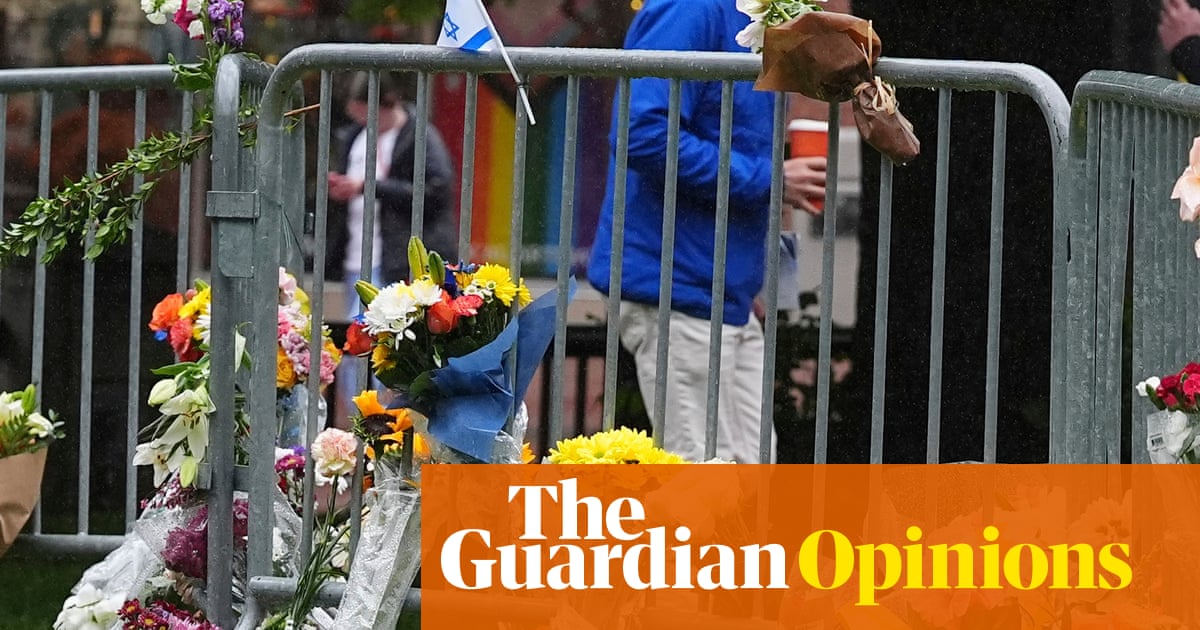This must stop. Two incidents of political violence, both targeting groups of Jewish people, are two incidents too many. Less than two weeks ago, a gunman shot and killed two Israeli embassy staffers in Washington DC, yelling “Free Palestine” as he was being detained. This week, a man used a “makeshift flamethrower” along with other incendiary devices toattacka Boulder, Colorado, rally organized byRun for Their Lives, a group which organizes events “calling for the immediate release of the hostages held by Hamas”. Eight people wereinjuredin this latest assault, at least two of them seriously.
These horrific acts will no doubt increase the anxiety many Jewish people have about increasing – and increasingly violent – antisemitism in the United States. Understandably so. Antisemitism must not be given any oxygen to breathe. One can oppose Israel’s 600-plus day war, relentlessly pounding the innocents in Gaza, while vigorously opposing all forms of antisemitism. In fact, one must oppose both. Such is our duty to each other in a civilized world.
And as we have a duty to call out antisemitism when we see it, we also have an equal duty to remember that Palestinians, Arabs and Muslims have also been subjected to extreme forms of violence and bigotry in the United States since the beginning of this terrible war. And while we are certain to hear much about today’s rising antisemitism in the coming days, as we should, we must also make sure to acknowledge the rising threats against Palestinians, Arabs and Muslims.
Consider what happened to Wadea al-Fayoume, a six-year-old Palestinian American boy. Wadea was murdered in October 2023 by his landlord, who stabbed the young boy 26 times in his home in Plainfield Township, Illinois. The landlord also attacked the boy’s mother, Hanan Shaheen,stabbingher over a dozen times whiletellingher “you, as a Muslim, must die.” Joseph Czuba, 73, the landlord, was foundguiltyof murder, attempted murder, and hate crime charges last month and sentenced to 53 years in prison.
Or there are the three Palestinian friends, all college students, who were out for a stroll in Vermont during the Thanksgiving long weekend in 2023. They weregunned downin what many are assuming is a hate crime. The three were speaking a mixture of Arabic and English and were sporting keffiyehs, and one of the three, Hisham Awartani, is now paralyzed from the neck down due to the shooting. The alleged assailant, Jason Easton, is currentlyon trialfor the shooting.
And there’s the time, in May 2024, when a woman attempted to drown a three-year old Palestinian girl in a swimming pool in an apartment complex in the Dallas-Fort Worth suburb of Euless. The suspect, Elizabeth Wolf, was arrested after the attack and, in September 2024, a grand juryindictedWolf on attempted capital murder and bodily injury to a child under and intentionally causing bodily injury to a child. The grand jury also included a hate crime enhancement in the indictment.
Or what about the evening when Zacharia Doar and three of his friends wereattackedwhile they were in their truck, which had a keffiyeh hanging off its side. They were returning from a rally for Palestine in Austin, Texas in February 2024. Their alleged attacker, Bert James Baker, was yelling racial slurs at them when he reportedly pulled Doar out of the truck and stabbed the 23-year-old Palestinian American in the back. Austin police labeled the attack a hate crime, though the grand jury did not include a hate crime finding in theirindictmentof Baker for aggravated assault with a deadly weapon.
We should recall that more than 30 protestors for Palestinian rights have filed a lawsuit against campus officials at the University of California – Los Angeles (UCLA) and law enforcement agencies, alleging that their civil rights had been violated during protests on campus. Last year, amobof at least a 100 masked young men descended on an encampment for Palestine that had been erected on campus. The mob attacked the protest for hours while law enforcement watched from the sidelines. As the New York Timesdescribedit, “counterprotesters swarmed individuals – sometimes a group descended on a single person. They could be seen punching, kicking and attacking people with makeshift weapons, including sticks, traffic cones and wooden boards.” Dozens of people were injured and taken to the hospital for treatment,accordingto the Los Angeles Times.
These are just a few of the stories of violence and abuse. There are, unfortunately, plenty more, such as the Illinois woman who allegedlyattackeda man and his pregnant wife at a Panera Bread because the man was wearing a shirt that said “Palestine.” The woman waschargedwith two counts of a hate crime and one count of misdemeanor disorderly conduct. Or there’s the bizarre case of the Jewish man in Miami Beach who allegedly shot at two men he believed to be Palestinians but who were in fact Jewish Israeli tourists. While in custody, the shootertoldthe police “he saw two Palestinians and shot and killed both,” according to arrest documents. Stranger still, one of the men who was shotreportedlyposted on social media that he and his father “survived an attempted murder motivated by antisemitism,” and then ended his message writing “death to Arabs.”
The organizations which track antisemitism and Islamophobia have each recorded record highincidentsandcomplaintsin the past year, as the violence of this war blows back our shores. None of this should be happening, and it’s clear that our first line of defense, and our responsibility as Americans, is to stop this war immediately, “before this violence grows and spreads further, consuming even more innocent lives in its monstrous path.” Iwrotethose words just over a week ago after the murder of embassy staffers in Washington DC. In a grim turn of events, they are even more true today.
Moustafa Bayoumi is a Guardian US columnist
